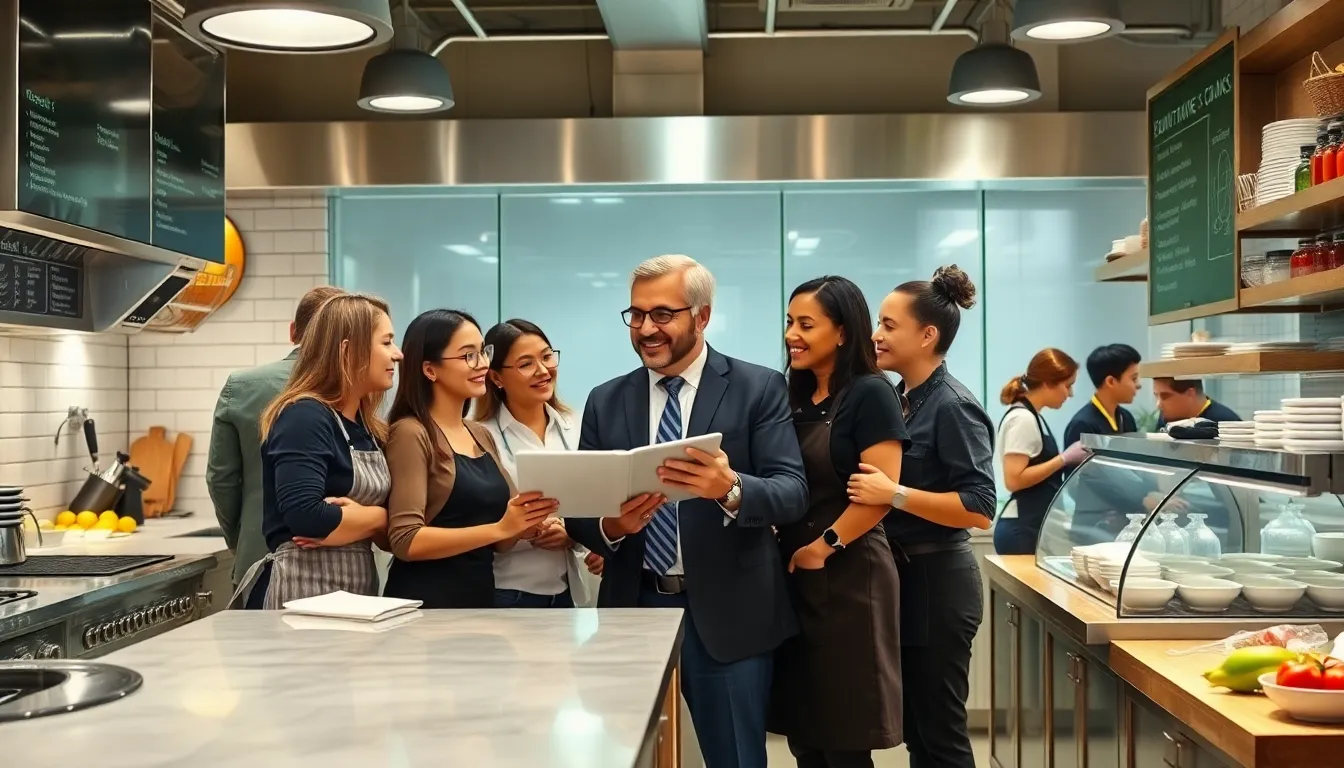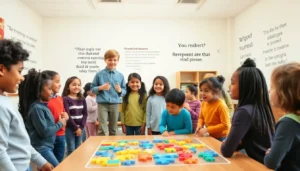Table of Contents
ToggleLeadership in restaurants is like trying to balance a spinning plate while juggling flaming torches. The stakes are high and the pace is exhilarating, but the rewards can be extraordinary. Understanding how effective leadership operates in the fast-paced culinary world will not only enhance operations, but it can also transform the customer experience. By learning from the best, you can lead with confidence, humor, and a touch of finesse. Let’s jump into the valuable lessons that could turn those plates into your finest performance.
Understanding Effective Leadership in Restaurants

Effective leadership in the restaurant industry goes beyond delegating tasks: it’s about creating an environment where everyone feels valued and motivated. Great leaders are visionaries who set the stage for success. They need to possess not just the culinary expertise but also a deep understanding of operations, customer service, and employee engagement.
To truly grasp effective leadership, one must embrace flexibility, as the restaurant landscape often resembles a dance floor, dynamic and full of surprises. Solid leaders assess situations, make informed decisions swiftly, and, most importantly, inspire others to embrace the hustle with enthusiasm. In essence, they embody the restaurant’s spirit and mission at all times.
Leaders must consistently evaluate their effectiveness: Are they promoting a culture of respect? Is there open dialogue among staff? What improvements can be made? These questions will pave the way for understanding what effective leadership looks like in every unique dining establishment.
Key Characteristics of Successful Restaurant Leaders
Successful restaurant leaders exhibit a blend of specific traits that set them apart in a competitive environment.
- Empathy: They understand the diverse backgrounds of their team members, allowing them to forge connections that boost morale and productivity.
- Adaptability: Change is a given in restaurants, whether prompted by customer preferences or kitchen challenges. Leaders who navigate changes effortlessly inspire confidence in their teams.
- Decisiveness: A successful leader makes informed decisions quickly, ensuring that operations run smoothly without hesitation.
- Confidence: They maintain poise under pressure, instilling trust among both staff and customers. The aura of assuredness can turn anxious situations into opportunities for growth.
- Passion: Perhaps the most infectious characteristic, a true passion for the dining experience is contagious, sparking motivation and dedication within the entire team.
These key characteristics not only elevate an individual’s leadership profile but also significantly shape the restaurant’s culture and operational success.
Building a Strong Team Culture
Creating a robust team culture is crucial in the restaurant industry. A coherent culture aligns everyone towards common goals and fosters a sense of belonging. Here’s how to cultivate that:
- Fostering Inclusivity: Every team member brings a unique perspective, which can be invaluable. Involving the entire team in brainstorming sessions can ignite creativity and drive ownership.
- Celebrating Success: Acknowledging and celebrating achievements, big and small, creates a positive atmosphere. Simple gestures, like shout-outs during staff meetings, can uplift everyone’s spirits.
- Encouraging Professional Development: Investing in employee growth through training and workshops strengthens the team. Development opportunities show that the leadership cares about individual futures, encouraging loyalty.
- Promoting Open Communication: Frequent check-ins can eliminate misunderstandings and enhance team dynamics. Fostering a culture where feedback flows in all directions creates a stronger sense of community.
The result? A strong, united team that can handle anything the high-pressure restaurant world throws at them.
Communication Strategies for Restaurant Leaders
Effective communication is the backbone of successful restaurant leadership. Here are several strategies to enhance communication:
- Active Listening: Leaders who listen to their teams build trust. Engaging with employees during discussions fosters open dialogue and often uncovers valuable insights.
- Transparent Messaging: Sharing information about company goals, challenges, and successes helps build a sense of community. When employees understand the bigger picture, they feel more engaged.
- Non-Verbal Cues: Body language can say more than words. Leaders should pay attention to posture, eye contact, and facial expressions to ensure they’re promoting a positive and approachable atmosphere.
- Utilizing Technology: Tools like group messaging apps can keep communication flowing seamlessly, especially during busy service hours. Ensuring everyone is informed can improve efficiency and morale.
A well-orchestrated communication strategy reduces confusion, enhances teamwork, and improves the overall performance of the restaurant.
Adapting to Challenges and Change
Challenges are a part of any restaurant leader’s journey, but it’s how they respond that truly counts. Embracing change requires a proactive mindset. Here are effective ways to adapt:
- Stay Flexible: The restaurant landscape can shift overnight. Whether it’s a new health guideline or supply chain issues, being prepared to pivot is essential.
- Learn from Mistakes: Mistakes happen, even in the best establishments. An effective leader takes them as learning experiences rather than failures, promoting a culture of growth.
- Encourage Innovation: Allowing your team to brainstorm solutions fosters creativity. Many great ideas come from frontline staff who know the operation best.
- Lead by Example: If a leader maintains a positive attitude during challenging times, it sets the tone for the entire team. Resilience is contagious and inspires everyone to persevere.
Responding effectively to challenges and changes is crucial for any restaurant leader, as they shape not only the operations but the culture of resilience within the team.
Continuous Learning and Development
In an industry as dynamic as restaurants, continuous learning is not a luxury: it’s a necessity. Here’s how leaders can foster an environment of ongoing development:
- Pursuing Knowledge: Encourage participation in workshops, conferences, and culinary classes. A knowledgeable leader is more adept at guiding their team.
- Sharing Insights: Foster an environment where team members can share what they learn. This exchange of information enriches the entire team.
- Mentorship Programs: Pairing less experienced staff with seasoned veterans can accelerate learning and build relationships that enhance teamwork.
- Feedback Mechanisms: Creating formal structures for feedback ensures that everyone can contribute to improvement processes, enhancing individual and collective skills.
When continuous learning is prioritized, it instills a culture of curiosity and improvement. As the industry evolves, so too must its leaders and their teams.





